Best Hiking Trails in Yosemite National Park

Yosemite National Park, a UNESCO World Heritage Site, is a hiker’s paradise, offering breathtaking vistas, towering waterfalls, and diverse ecosystems. Located in California’s Sierra Nevada, Yosemite attracts millions of adventurers annually, with trails catering to all skill levels. Whether you’re seeking a leisurely stroll or a challenging ascent, this guide highlights the best hiking trails in Yosemite National Park, packed with practical tips, trail details, and like Yosemite hiking trails, best hikes in Yosemite, and Yosemite National Park guide to help you plan your adventure.
Why Hike in Yosemite National Park?
Yosemite’s 800 miles of trails showcase granite peaks, serene meadows, and iconic landmarks like Half Dome and Yosemite Falls. Hiking here immerses you in nature’s grandeur, from cascading waterfalls to ancient sequoias. With Yosemite hiking trending, this guide covers trails for beginners, intermediates, and experts, ensuring every adventurer finds their perfect path. Let’s dive into the top hiking trails in Yosemite for an unforgettable outdoor experience. Here’s The Best Hiking Trails in Yosemite National Park
1. Yosemite Falls Trail (Moderate to Strenuous)
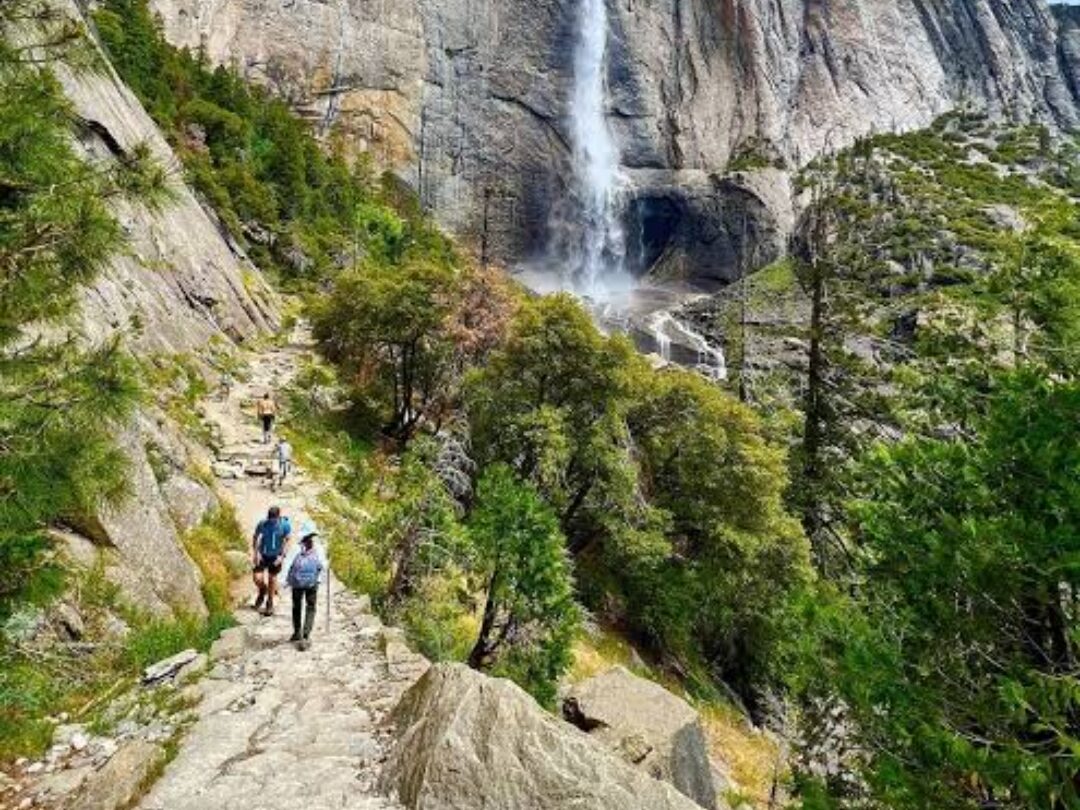
- Distance: 7.2 miles round-trip
- Elevation Gain: 2,700 feet
- Difficulty: Moderate to Strenuous
- Estimated Time: 6-8 hours
- Trailhead: Camp 4, near Yosemite Valley Lodge
The Yosemite Falls Trail leads to the top of North America’s tallest waterfall, standing at 2,425 feet. This iconic hike offers stunning views of Yosemite Valley and the falls, especially in spring when water flow peaks. The trail is steep and rocky, with switchbacks leading to Columbia Rock (1.5 miles, moderate) and the upper falls (strenuous).
Why It’s a Must-Do:
- Offers panoramic views of Half Dome and the valley.
- Spring hikers enjoy mist from the falls, creating rainbows.
- Less crowded at the top, perfect for photos.
Tips for Hiking Yosemite Falls:
- Start early to avoid crowds and heat.
- Bring at least 2 liters of water per person.
Wear sturdy hiking boots for rocky terrain. - Check weather conditions, as the trail can be slippery in rain.
2. Half Dome Trail (Strenuous)Distance:
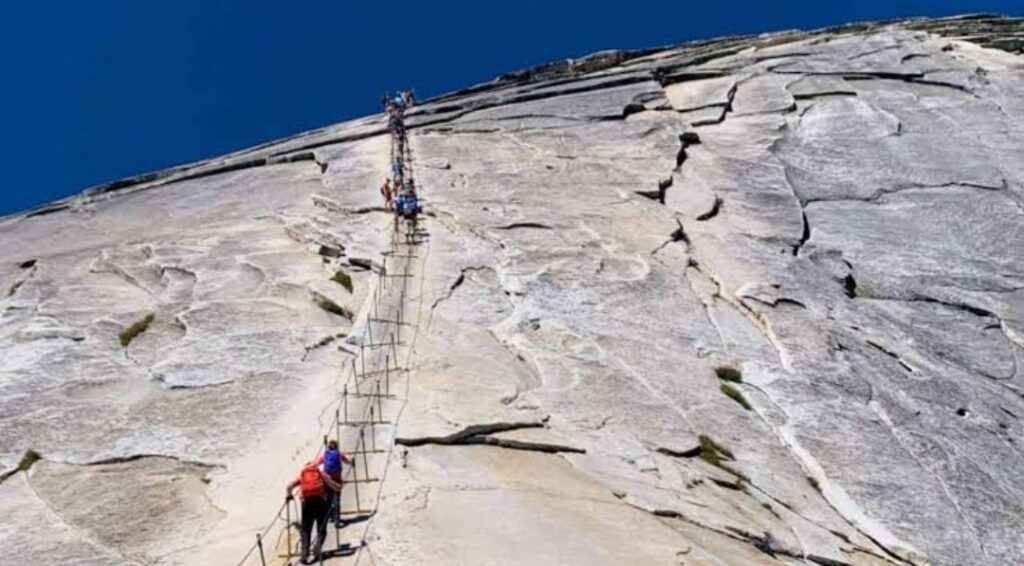
- 14.2 miles round-trip
- Elevation Gain: 4,800 feet
- Difficulty: Strenuous
- Estimated Time: 10-12 hours
- Trailhead: Happy Isles, Yosemite Valley
The Half Dome Trail is Yosemite’s bucket-list hike, culminating in a thrilling 400-foot cable ascent to the summit. The trail passes Vernal and Nevada Falls via the Mist Trail before climbing to Glacier Point and Half Dome’s iconic granite dome. A permit is required for the final cable section (apply via lottery at recreation.gov).Why It’s a Must-Do:Unmatched 360-degree views of Yosemite Valley and the High Sierra.
A challenging adventure for experienced hikers.
Features the scenic Mist Trail and waterfalls.
Tips for Hiking Half Dome:
Train for endurance and grip strength for the cables.
Secure a permit early (300 permits issued daily).
Start at dawn to avoid afternoon heat and crowds.
Pack layers, as weather changes rapidly at higher elevations.
3. Mist Trail to Vernal and Nevada Falls (Moderate)Distance:
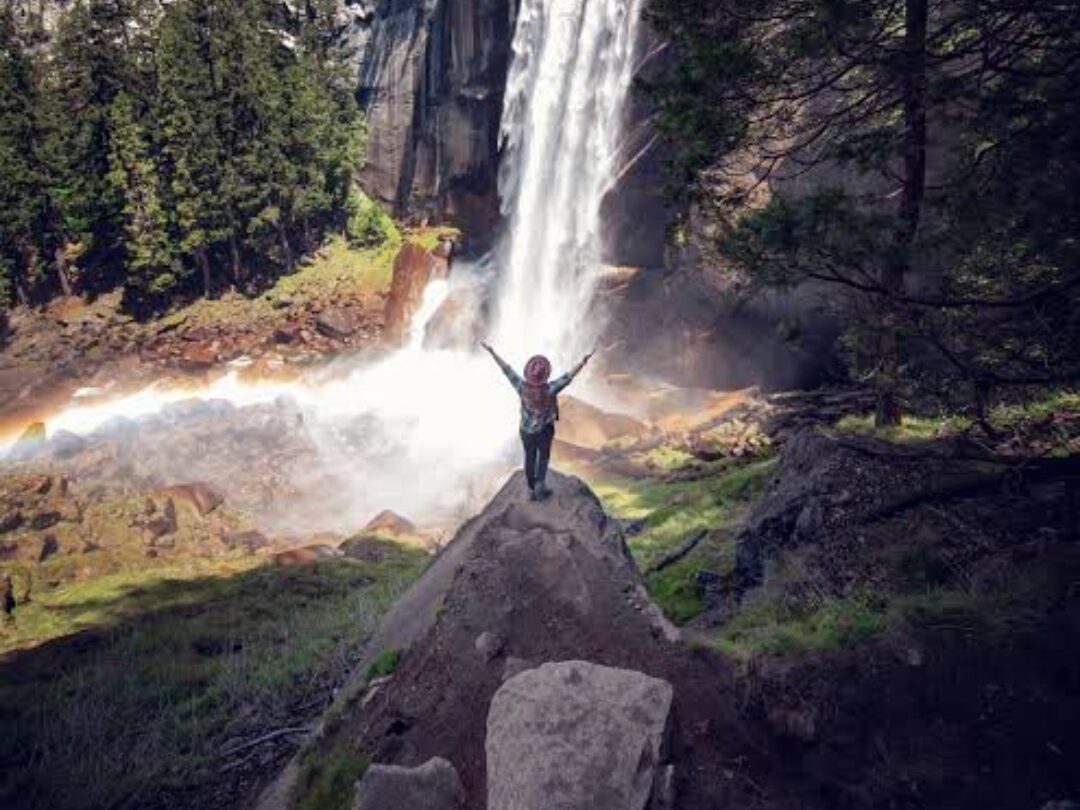
- 3-7 miles round-trip (depending on endpoint)
- Elevation Gain: 1,000-2,000 feet
- Difficulty: Moderate
- Estimated Time: 3-6 hours
- Trailhead: Happy Isles, Yosemite Valley
The Mist Trail is one of the best hikes in Yosemite for waterfall lovers. It leads to Vernal Fall (3 miles round-trip) and Nevada Fall (7 miles round-trip), with misty steps near the falls creating a refreshing experience. The trail is steep but manageable for fit beginners.
Why It’s a Must-Do:
Close-up views of two spectacular waterfalls.
Shorter options make it accessible for families.
Vibrant wildflowers in spring and summer.
Tips for Hiking Mist Trail:
- Wear waterproof gear, as the trail gets wet near Vernal Fall.
- Use trekking poles for stability on slippery steps.
- Avoid peak hours (10 AM-2 PM) for fewer crowds.
- Extend to Nevada Fall for a rewarding challenge.
4. Mirror Lake Trail (Easy)Distance:
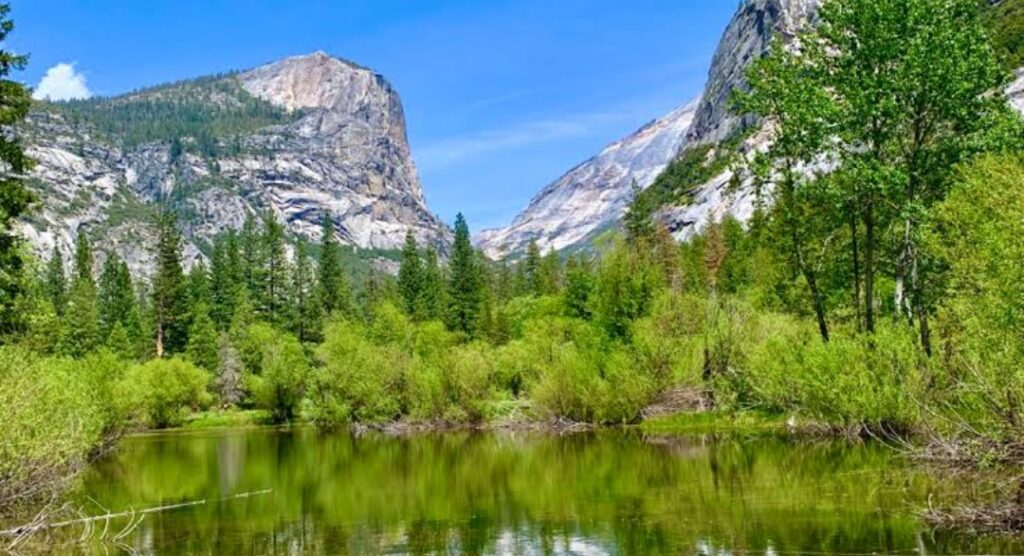
- 2-5 miles round-trip
- Elevation Gain: 100-200 feet
- Difficulty: Easy
- Estimated Time: 1-2 hours
- Trailhead: Mirror Lake Trailhead, Yosemite Valley
The Mirror Lake Trail is a family-friendly hike offering stunning reflections of Half Dome in the lake’s calm waters, especially in spring. This flat, paved trail is perfect for beginners or those seeking a leisurely Yosemite hiking experience.
Why It’s a Must-Do:
- Accessible for all ages and fitness levels.
- Ideal for photography, especially at sunrise.
- Short enough for a quick visit.
Tips for Hiking Mirror Lake:
- Visit in spring for maximum water levels; the lake may dry up in late summer.
- Bring binoculars for birdwatching.
- Extend the loop to 5 miles for views of Tenaya Canyon.
5. Cathedral Lakes Trail (Moderate)Distance:
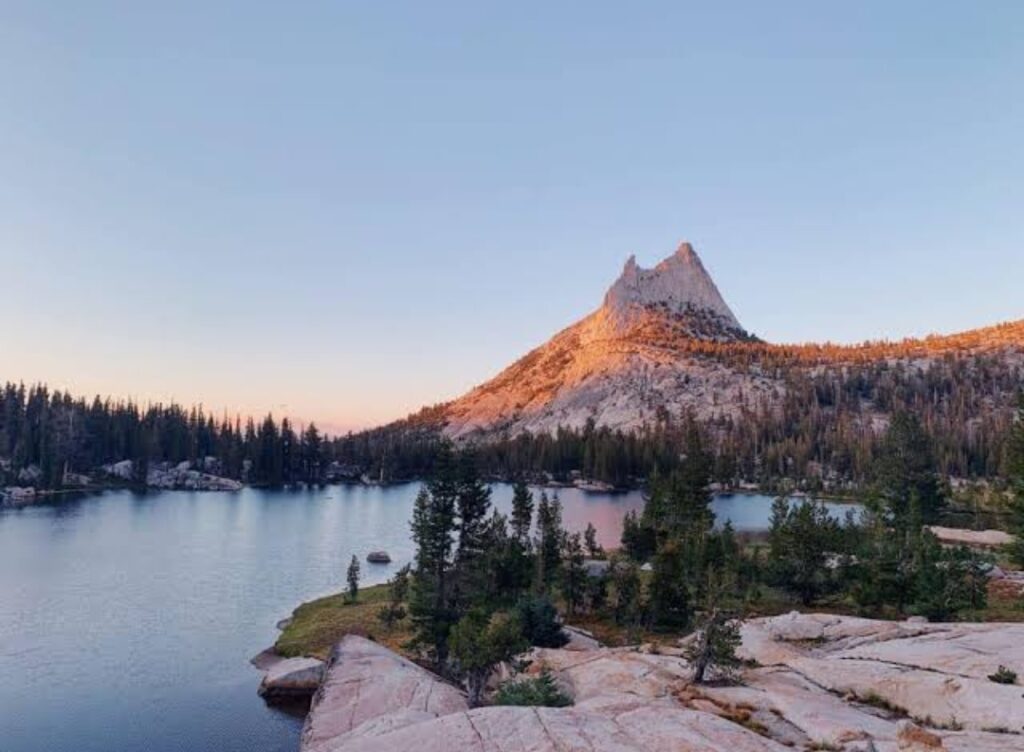
- 7 miles round-trip
- Elevation Gain: 1,000 feet
- Difficulty: Moderate
- Estimated Time: 4-6 hours
- Trailhead: Tuolumne Meadows, Tioga Road
Located in the high-country Tuolumne Meadows, the Cathedral Lakes Trail leads to two alpine lakes framed by Cathedral Peak. This trail offers serene beauty and fewer crowds than valley hikes, making it a gem for 2025.
Why It’s a Must-Do:
Stunning alpine scenery with granite peaks and clear lakes.
Perfect for a half-day hike in Tuolumne Meadows.
Great for wildflower viewing in July and August.
Tips for Hiking Cathedral Lakes:
- Tioga Road is seasonal (typically open
- May-October), so plan accordingly.
- Bring bug spray, as mosquitoes are common in summer.
- Pack a picnic to enjoy by the lakes.
6. Glacier Point to Panorama Trail (Moderate to Strenuous)
- Distance:8.5 miles one-way (shuttle required)
- Elevation Gain: 3,200 feet descent
Difficulty: Moderate to Strenuous
Estimated Time: 5-7 hours
Trailhead: Glacier Point
The Panorama Trail starts at Glacier Point and descends to Yosemite Valley, passing Illilouette Fall and offering epic views of Half Dome, Nevada Fall, and Vernal Fall. This one-way hike requires a shuttle or car arrangement.
Why It’s a Must-Do:
Combines Glacier Point’s iconic views with waterfall scenery.
Less crowded than Mist Trail but equally scenic.
Ideal for photographers and day hikers.
Tips for Hiking Panorama Trail:
Book the Glacier Point shuttle for a hassle-free return.
Start early to avoid midday heat.
Bring sunscreen, as much of the trail is exposed.
Practical Tips for Hiking in Yosemite National Park
To make your Yosemite hiking adventure safe and enjoyable, follow these tips:
Permits and Reservations:
- Half Dome requires a permit for the cable section (apply via recreation.gov).
- Wilderness permits are needed for overnight backpacking.
- Check park entry reservations, as Yosemite requires them during peak seasons (April-October).
Best Time to Hike:
- Spring (April-June) for waterfalls and wildflowers.
- Summer (July-August) for high-country trails like Tuolumne Meadows.
- Fall (September-October) for fewer crowds and mild weather.
- Winter hiking is limited; stick to lower-elevation trails like Mirror Lake.
Gear Essentials:
- Sturdy hiking boots with good traction.
- Water (2-3 liters for strenuous hikes).
- Layers for changing weather, especially at higher elevations.
- Trekking poles for steep trails like Half Dome or Mist Trail.
Safety Tips:
- Stay on marked trails to avoid getting lost.
- Check weather forecasts, as storms can arise quickly.
- Store food properly to deter bears (use bear canisters for backcountry hikes).
Leave No Trace:
- Pack out all trash and respect wildlife.
- Stick to trails to preserve fragile ecosystems.
Planning Your Yosemite Hiking Trip
Getting to Yosemite:
- By Car: Yosemite is 4 hours from San Francisco and 6 hours from Los Angeles.
- Park entrances include Big Oak Flat, Arch Rock, and Tioga Pass (seasonal).
- By Shuttle: YARTS (Yosemite Area Regional Transportation System) connects to nearby cities like Merced and Fresno.
- Park Shuttles: Free shuttles operate in Yosemite Valley, with paid options to Glacier Point.
Where to Stay:Camping:
- Camp 4 (Yosemite Valley) or Tuolumne Meadows Campground are hiker favorites.
- Lodging: Yosemite Valley Lodge or Curry Village for proximity to trailheads.
- Backcountry: Wilderness permits allow camping on multi-day hikes.
Nearby Attractions:
- Explore Mariposa Grove for giant sequoias.
- Visit Glacier Point for panoramic views without hiking.
- Relax in Yosemite Valley’s meadows after your hike.
Why Yosemite Hiking Trails Are Trending
Yosemite’s trails are gaining popularity due to increased interest in outdoor activities and adventure travel. Social media platforms like Instagram and posts on X highlight Half Dome and Yosemite Falls as must-visit spots, driving search volume for Yosemite hiking trails. With sustainable tourism on the rise, Yosemite’s pristine wilderness appeals to eco-conscious travelers. Plan early to secure permits and accommodations, this year is expected to be a busy year.
Final Thoughts
Yosemite National Park offers some of the best hiking trails in the world, from the heart-pounding Half Dome ascent to the serene Mirror Lake stroll. Whether you’re chasing waterfalls, alpine lakes, or panoramic views, these trails deliver unforgettable experiences. Use this Yosemite hiking guide to plan your adventure, and share your journey with us! Which trail are you most excited to explore? Let us know in the comments!